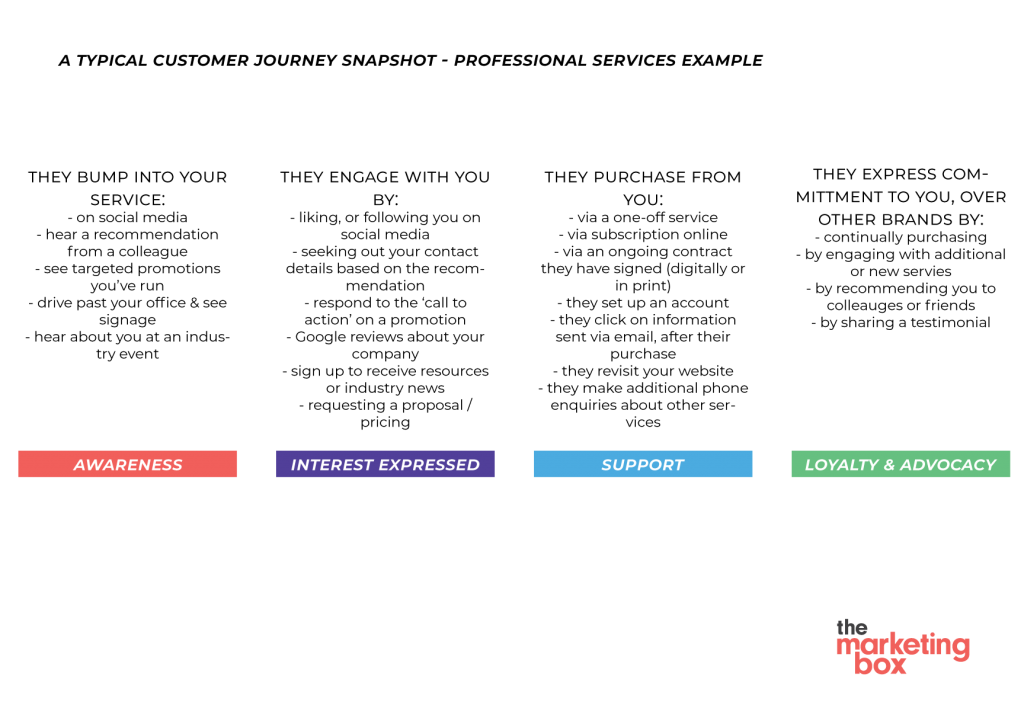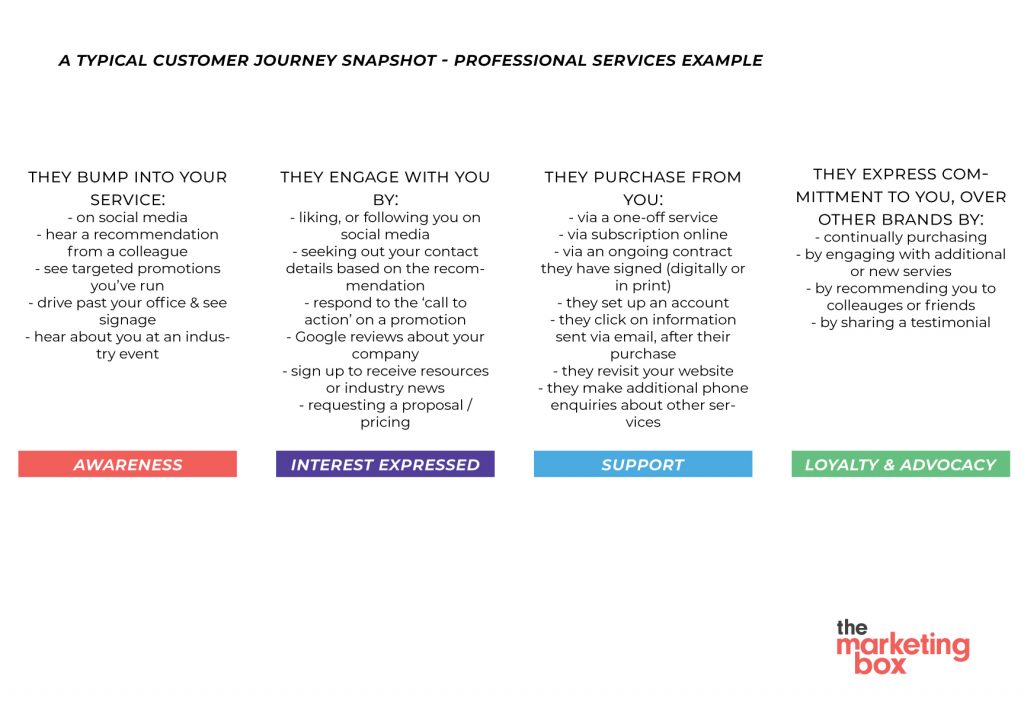
The Buyer Journey Framework
In today’s challenging and changing times, it’s more important than ever to look at honing in your marketing initiatives to increase your sales, customer base and client/buyer retention.
One effective and efficient – yet often neglected – way to do this is through understanding your customer journey. Regardless of the type of market or industry, or even product type that you sell, there is a path that your prospects, and then customers will generally follow. This is known as the ‘Buyer Journey’. Essentially, it is the steps a prospect takes to become a customer and shift into the sales process, from first awareness of your product or service, through to loyalty, recommending you, and rebuying, following the first sale.
Understanding the buyer journey of your customer base is invaluable in anticipating where to spend your time and money to get the ‘best bang for your buck’. So, what should you be looking at? Put simply, there are four main steps in the buyer journey. The following outlines the basic understanding you should have about your buyer journey, to get the most out of your valuable time, energy and marketing dollars.
- Awareness of your product or service
This is how potential customers ‘bump’ into your product or service.
Awareness can be through a variety of channels including social media, word of mouth through existing customers or industry contacts, targeted promotions or even as simple as driving past your shopfront or seeing your signage. Understanding how your clients gain awareness of your product or service is key in knowing where to focus your energies to increase your chances of getting noticed by prospective buyers.
Professional Services Example of a Customer Journey
- A prospect’s expression of interest
This is how a prospect engages with you and show interest in your product or service. Are your prospects liking or following you on social media, are they seeking you out through word of mouth referrals, searching you on google or responding to a ‘call to action’ on a promotion? Knowing how your customers are engaging with you allows you increase engagement with new prospects by honing in on your most valuable and successful marketing channels and strategies.
When you consider your ‘Call to Action’ (CTA), test to see if what are you asking them to do actually motivates action. If not, test one or two other ways to prompt engagement.
- Support (the step when they engage in a purchase and become a customer)
Do you know the way your buyers purchase from you? Are your sales primarily through your shopfront? Website? Via a sales engagement process with team members, that takes 3-6 months?
Are they purchased on account, or is payment taken at the point of sale? Are you offering subscription or contract services, or are you providing one-off product or service offerings?
Understanding your core offerings and how your sales are made allows you to enhance the customer experience and capitalise on the customer interaction to increase satisfaction, support and retention. This is a great step to examine, to ensure it’s simple and streamlined for a customer – especially as they’ve finally made the decision to purchase from you (and not the competition).

Consumer Product Example of a Customer Journey
- Loyalty and Advocacy
So, you’ve landed your sale, that’s the end-of-the-line, right? Wrong. The sales journey is a continuous one. Following each sale, you should be taking the time to understand why your customer base continues to show commitment to you. Whether it’s through continually purchasing your product or service, through recommendations or positive reviews and testimonials, identifying why your customers express loyalty and advocate for you allows you to enhance the way you interact with your buyers to increase customer retention and ultimately increase sales.
Aim to keep them satisfied so you can retain them as a customer + aim to loop them back into the buyer journey. Whether it’s rebuying the same product, or exploring a new service area – this is an audience that already likes you, and whom you already have a relationship with – generally it’s a much lower cost to acquire another sale from them, so think about what you can do to support this, in a manner that your customers will appreciate.
While the buyer journey is universally recognised, many businesses – big and small – often overlook this crucial step in marketing. They get caught up in the ‘selling’, instead of taking the time to regularly look at the bigger picture and map this journey for their customers. Use the Buyer Journey framework to review and adjust your approach to your marketing in order to increase your sales, customer base and client/buyer retention.
Need a fresh set of eyes to review your Buyer Journey? Contact The Marketing Box and we’ll be happy to help you navigate this crucial activity.
